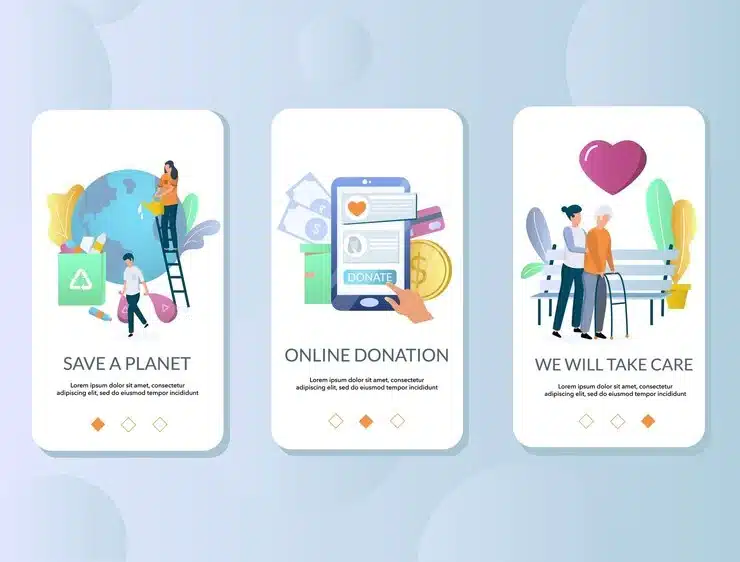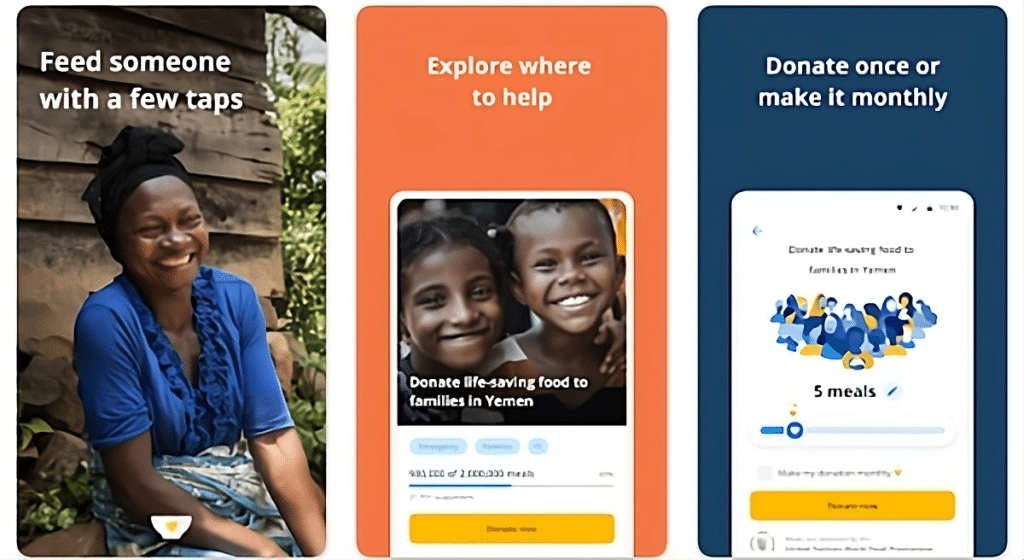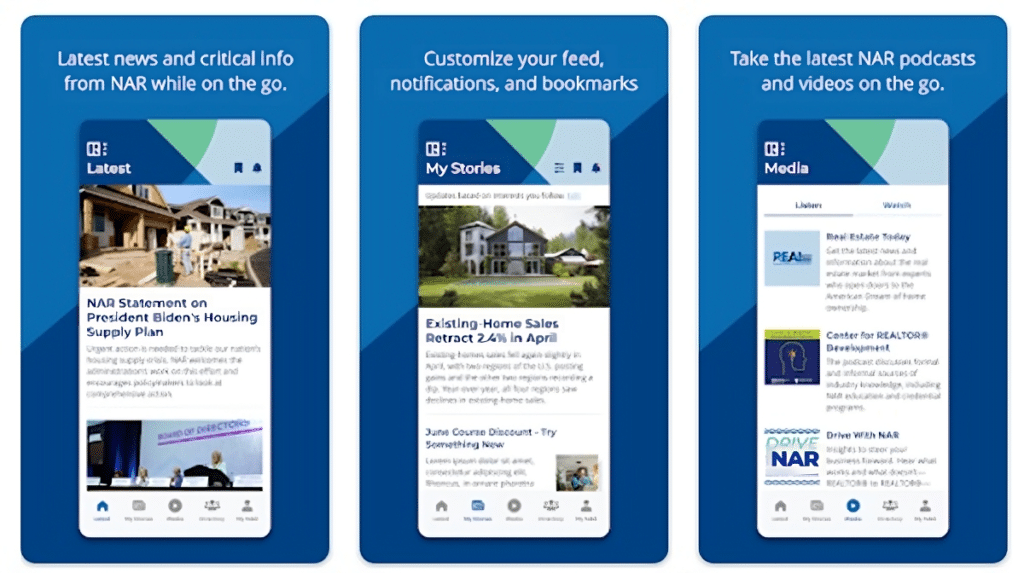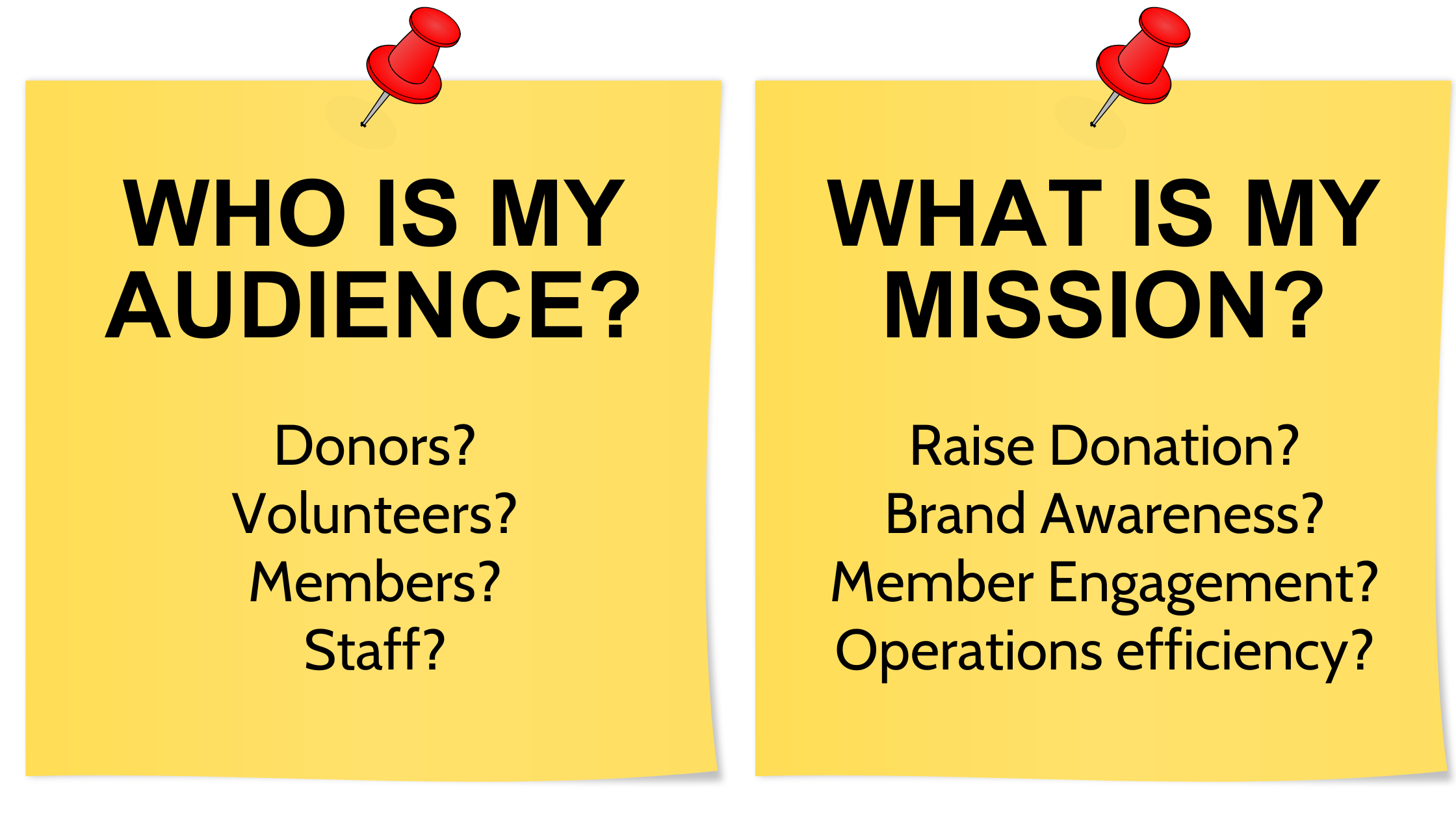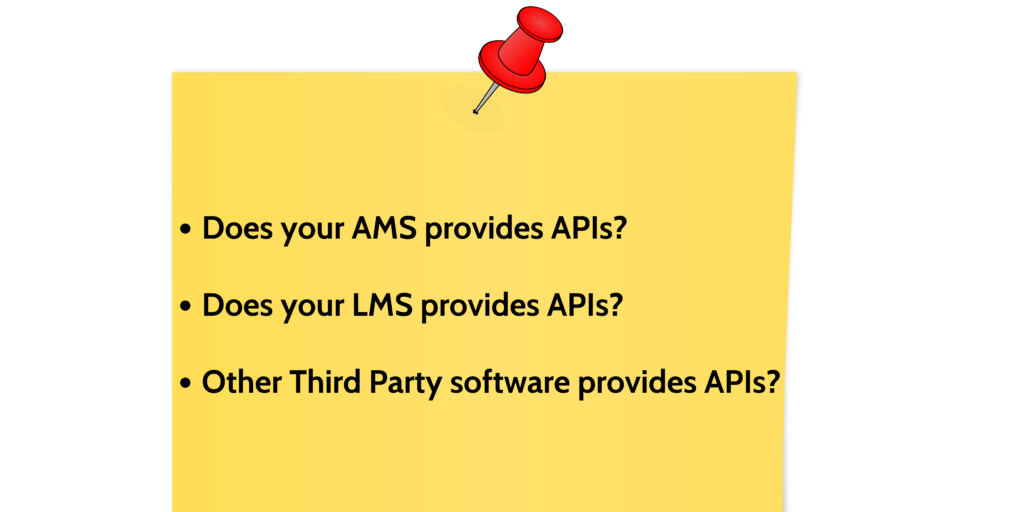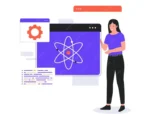Custom apps can be very powerful tools for any organization, especially for nonprofits and associations. Developing a bespoke app for your nonprofit may assist you in reaching more people, increasing brand awareness, raising funds for important causes, or improving your productivity. When taking the first step, developing a custom app may seem complicated, however, new technologies and tools make the app development process easier. The planning of the custom app development process is important. You need to define the objective of your nonprofit app and how it will provide value to your supporters.
Why Nonprofits/Associations Build Custom Apps?
There are many reasons to develop an app for your nonprofit. Here are some of the use cases for nonprofits/associations:
1. Collect Donations/Charity
Building a specialized app for non-profits helps to collect more donations. You will be able to interact with users, organize exciting competitions, and analyze your donations with the help of an app. This, in turn, helps you to maximize your donor’s impact, runs rewards campaigns for your donors, and helps you keep your most loyal supporters close. The United Nations has a great app that allows people to donate for meals. ShareTheMeal is a charity app, that allows you to seamlessly feed people all over the world with just a few taps on your phone.
Source: The image is taken from an Android app
2.Customized Membership Engagement App
There are some off-the-shelf membership apps available for nonprofits and associations. However, a customized membership app can offer better features and user experience to your members. You could create a membership app that connects to your AMS and LMS or any other software you are using in the backend to make it more enticing and valuable for your members. If members can complete learning courses in the app, this can make members complete the courses faster and increase the value proposition of the app. The ability to send targeted push notifications to members can also increase engagement. You could establish groups for various activities like fundraising events, book clubs, or roadside cleanups to increase engagement in the app. People thrive in teams with others who share similar interests and objectives. Offering prizes for teams that raise the most money can further incentivize participation. Competition serves as a powerful motivator to encourage users to become more involved.
3. Improve Productivity
Nonprofits have several workflows in their operations, and by building custom apps, they can optimize the workflows. Productivity apps allow teams to perform operations functions faster and more efficiently. For example, you can have a custom app that helps your team streamline an internal operation. For example, one international charitable organization built a custom app to track the shipping and delivery of drugs and food to multiple countries. This ensured that all the targeted donors received the donation, while donors could see the real-time tracking of the supplies.
4. Raise Awareness
Mobile apps enable nonprofits to raise awareness about significant causes. They facilitate direct communication with users, informing them about new campaigns. Apps serve as effective tools for spreading awareness, as users often share them with their family and friends, who may also download the app. The National Association of Realtors has a great app to educate its members about new trends and news. The images are taken from here:
Source: The image is taken from an Android app
The Association of Professors of Gynecology and Obstetrics (APGO) has built several apps on pregnancy care to educate pregnant women to handle the 40 weeks of pregnancy.
Source: The image is taken from an iOS App
5. Customized Learning App
Nonprofits and associations require their members to take courses, certificates, and learning programs. Organizations need to track the progress of their members and incentivize them to take more learning courses. Most of the time, members go to a website or online portal to take courses. These days, people like to go to apps more than the website to take courses. If learning courses are available on the phone app, members can take courses even when they are commuting to work in the metro/bus/subways. In a custom learning app, you can also gamify the learning by creating leaderboards and rewards.
Read More: iOS vs Android for App Development
Steps to Consider While Developing Apps for Nonprofits
Developing an app for your non-profit can be a challenging but rewarding experience. An app that works seamlessly will help you build good relationships with donors and volunteers. Here are some important things to consider while building a mobile app:
1. Define Your Target Audience and App Goals
In the first stage of building a mobile app for your non-profit organization, you should identify your goals and target audience. Make sure that your app is built to fit the objectives of your organization and the requirements of your target users at the same time. Define the functions you want the app to perform, e.g. donation processing, event registration, QR code scans, or volunteer sign-up. Additionally, consider the primary users of the app: are they donors who want to give funds, volunteers who seek to engage, or participants of the programs who require certain resources? Learning about your audience lets you develop an app that is easy to use and tailored to your audience’s specific needs. After you understand your objectives, you can proceed with the next app development stage.
2. Identify Your App Features
It is necessary to identify the main features that suit your needs as well as the main functionality of your app. Make a list of all the features you plan to incorporate in it, for example, online donation processing, event registration, volunteer sign-up, or program resources. OIG verification to screen staff or volunteers against exclusion lists to maintain compliance and avoid legal risks. Find out which features are important and which ones can be eliminated. Moreover, evaluate any integrations that you may need, e.g. social media, payment gateways, or email marketing platforms. Implementing email verification ensures that all communications, notifications, and platform access details are sent to valid and active addresses, reducing errors and enhancing reliability.
Need An Estimate for Nonprofit App? Use Our App Cost Calculator Tool
3. Does Your App Needs to be Integrated with AMS or LMS
Many nonprofits/associations use an Association Management System (AMS) or learning Management System (LMS) to manage the association and learning program. When you are building a custom app, you may want to integrate the app with your AMS or LMS backend. Before you plan to integrate the app, you should make sure if the AMS or LMS provides the APIs to connect. For instance, you could consult A Comprehensive Guide to Open edX to verify the connectivity options of that specific platform. If APIs are not provided by these third parties, it will be impossible to integrate the app with these systems.
4. Determine Your Budget
Setting a budget for the app can be a difficult task. It depends on so many factors such as app size, complexity, features, and many more. The mobile app development cost mainly depends on who will build your app. Are you planning to design it yourself? Will you choose a low-code platform, use offshore developers, or hire a freelancer or an app agency for that? Digital projects need maintenance, so make sure you take that into account when you budget. The more platforms you want to cover the greater the maintenance cost. You can also use the app cost calculator to estimate the budget.
5. Find the Best App Development Team
Hiring the best app development company is a critical factor in building a nonprofit app. There are several app development companies available in the global market. Assessing them regarding their experience, portfolio, technology, location, and many more is very important to build quality apps. It will guarantee that your app is bug-free, offers the needed functionality at a reasonable price, and fulfills your business requirements.
6. Design an Intuitive and User-Friendly Interface
When developing an app for your non-profit you should focus on creating a user-friendly interface (UI). User-friendly UI lets users navigate through the app without hassle. This feature simplifies searching as it enables users to locate the needed features. On the other hand, using your branding assets, for instance, colors or logos, assists in creating a consistent and recognizable experience. A good UI can present your app as an engaging one.
7. Choose the Most Suitable Platform for App Development
After finalizing your non-profit app features and functionality, it’s time to select a platform or framework for your app development. Now there are many options: native app development, hybrid app development, and web app development. Native apps are specially built for either iOS or Android platforms and have enhanced performance, however, they require significant time and resources for development.
- Mobile Apps: Native apps are specifically built to work on a particular operating system, such as iOS, Android, or Windows. This implies that each app requires its distinct codebase. Consequently, if you intend to launch your app on Android and iOS platforms, you must develop two separate apps.Cross-platform mobile development is a strategy for creating software applications that work seamlessly across various mobile operating systems or platforms. These apps are accessible irrespective of the operating system running on the mobile device. They feature reusable code that can be utilized across multiple platforms, streamlining development and reducing costs, especially for repetitive tasks. Faster development often results in quicker time to market for the app.
- Web Apps: Web Apps are software programs that can be used with a web browser through a URL, no matter where it is on a mobile or desktop device. The advantage of a web app is that users don’t need to install it from an app store. They have one code base, which performs on all mobile platforms. Nonetheless, web apps often have fewer functionalities than native mobile applications.
- Progressive Web Apps: A progressive web app combines elements of both native mobile apps and web applications, representing a new and innovative technology. Users can operate PWAs through the browser, no need to download them from app stores. Despite this similarity to web apps, PWAs function similarly to native apps, including offline capabilities. Developers utilize web technologies such as HTML5 and JavaScript to build PWAs. Furthermore, PWAs can utilize built-in device features like the camera, further blurring the line between web and native apps.
8. Test Your App to Optimize It and Debug It
After you’ve designed and built the app for your non-profit organization, you must test it a lot. The entire app should be tested, from the way it functions, how users feel, and how well it works. Implement QA testing tools (quality assurance) to catch any bugs or flaws within the app. Also, ensure that it is optimized for all devices. You may use beta testers that would help you with useful tips on usability and features. Testing and adjusting are the critical components of making an app that is successful with the target audience and can get more support for the organization’s mission.
.
9. Launch and Market
Launching and promoting your nonprofit application is the key to success. Begin with a team-building launch plan with SMM, email campaigns, and press releases. Use your networks and connections to leverage on marketing your app release. Moreover, launching giveaways or incentives for early downloads can attract more users. Some nonprofits even support their digital launch campaigns with traditional mailers in custom envelop formats to reach supporters who prefer physical communication. Through continuous engagement and feedback loops with the users post-launch, you will be able to refine your application and improve its effectiveness in achieving your nonprofit’s mission.
Conclusion
A customized mobile app for your non-profit can help you to reach a wider audience, get more donations, increase productivity amongst your staff, and add additional value to your customers/clients.
Simpalm has 13+ years of hands-on experience in app development for Nonprofit industry. We will help you build the app of your dreams and guide you through designing the exact features you may need to solve your existing problems. Whatever it may be such as adding that essential feature, or simplifying the design– we are here to help you.

 App Development
App Development Web Engineering
Web Engineering AI Services
AI Services Startups
Startups Health / Fitness
Health / Fitness Education
Education Social
Social Nonprofit
Nonprofit Fintech
Fintech Logistics
Logistics Government
Government HR Software
HR Software About Simpalm
About Simpalm Our News
Our News Client Testimonials
Client Testimonials Careers
Careers Awards
Awards Resources
Resources Information
Information